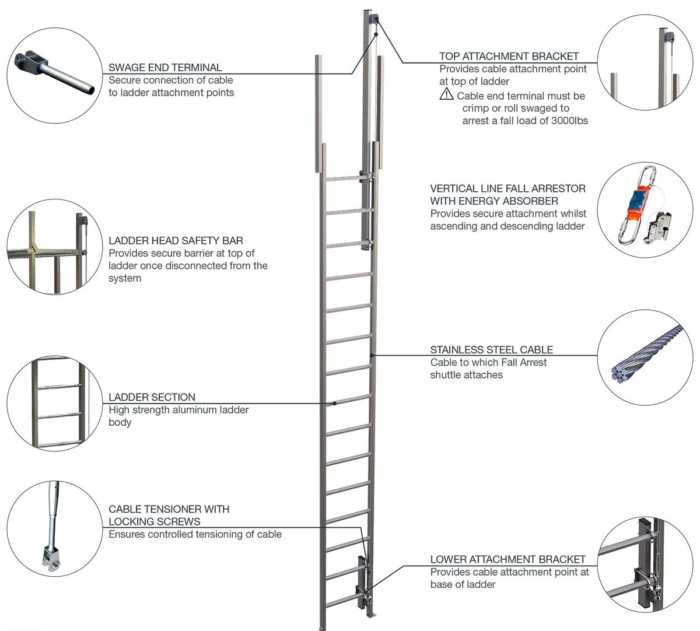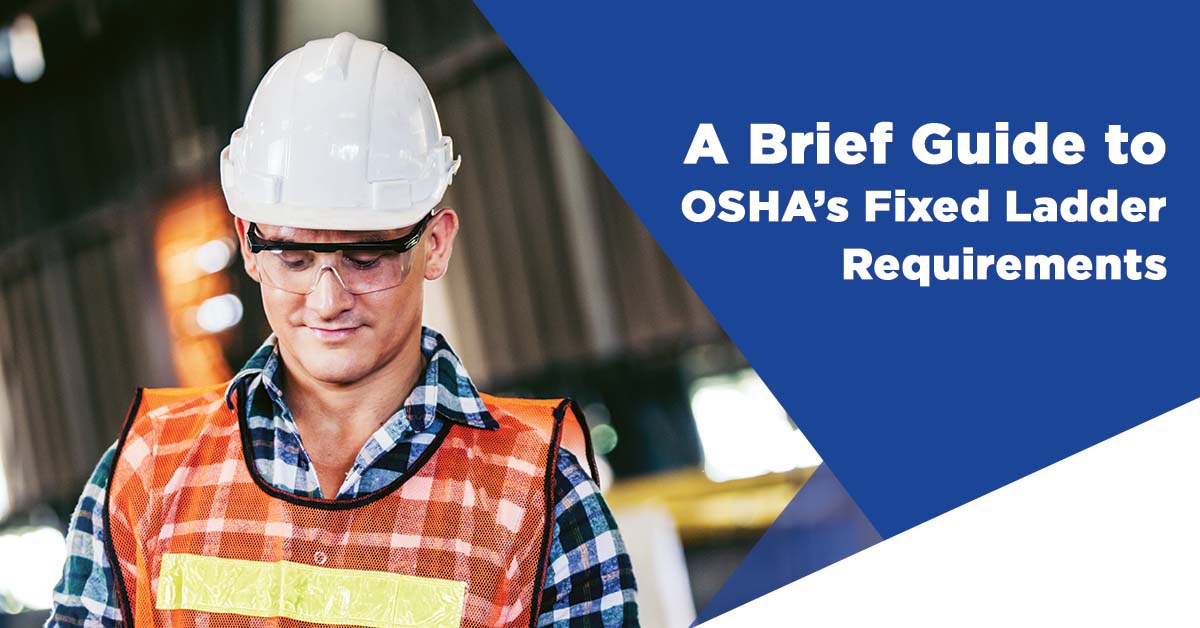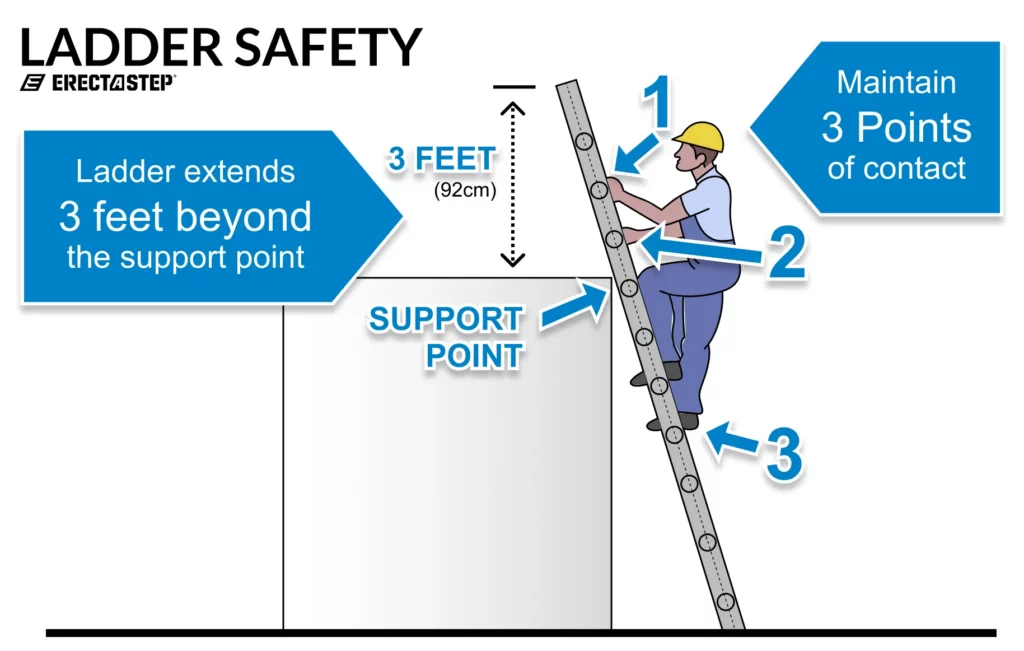Fixed ladders play a crucial role in various industries. They provide safe access to elevated areas.
But at what degree should they be used? Fixed ladders need to be installed at a specific angle to ensure safety and stability. This angle is not just a random number. It is based on research and safety standards. Knowing the correct angle can prevent accidents and injuries.
In this blog post, we will explore the ideal degree for fixed ladders. We will also discuss why this angle is important and how it affects ladder performance. Stay with us as we dive into the details and ensure your ladder use is both safe and effective.
Importance Of Fixed Ladders
Fixed ladders are a vital part of many workplaces. They provide safe access to elevated areas. Using them correctly is crucial. The angle of the ladder is important. It affects safety and compliance.
Workplace Safety
Safety should be the top priority in every workplace. A fixed ladder at the wrong angle can be dangerous. Falls from ladders can cause serious injuries. To avoid this, fixed ladders should be set at the right degree.
The ideal angle for a fixed ladder is 75 degrees. This provides stability. It also makes climbing easier. Workers are less likely to slip or lose balance. Ensuring the ladder is set correctly can prevent many accidents.
Compliance With Regulations
Workplace regulations are strict. They ensure a safe environment for employees. Fixed ladders must meet specific standards. These include the correct angle. Not complying can result in penalties.
Regulations often require the ladder to be at 75 degrees. This is considered safe by experts. It also aligns with industry standards. Ensuring compliance protects both workers and the company.
Here is a summary of key points:
| Aspect | Details |
|---|---|
| Ideal Angle | 75 degrees |
| Importance | Safety and Compliance |
| Regulations | Must meet industry standards |
- Fixed ladders provide safe access to elevated areas.
- The correct angle is crucial for safety.
- Regulations require ladders to meet specific standards.

Credit: caisafety.com
Optimal Angle For Fixed Ladders
Understanding the optimal angle for fixed ladders is crucial for safety and efficiency. Fixed ladders are used in various settings, from industrial sites to residential buildings. Correct installation ensures stability and reduces the risk of accidents.
Recommended Degree
The recommended angle for fixed ladders is between 75 to 90 degrees. This range provides a balance between ease of use and safety. At 75 degrees, the ladder is easier to climb. At 90 degrees, it offers maximum stability.
Here is a simple table explaining the recommended degrees and their benefits:
| Degree | Benefits |
|---|---|
| 75° | Easy to climb, less physical effort required |
| 90° | Maximum stability, ideal for heavy-duty use |
Impact On Stability
The angle of the ladder significantly impacts its stability. A ladder set at 75 degrees leans more, making it easier for users to climb. But, it may wobble if not properly secured.
On the other hand, a ladder at 90 degrees stands straight. This offers better support and reduces movement. It is ideal for heavy tasks and frequent use. Using a ladder at the right angle prevents accidents and ensures a secure climb.
Remember these key points for ladder stability:
- Ensure the ladder is on a stable surface.
- Secure the top and bottom of the ladder.
- Do not exceed the weight limit of the ladder.
Choosing the correct angle and following safety measures can make a big difference. It keeps users safe and extends the ladder’s lifespan.
Installation Guidelines
Proper installation of fixed ladders is crucial for safety. Following the right guidelines ensures that the ladder is secure and fits well. Below are important steps to consider during installation.
Securing The Ladder
Securing the ladder is the first step. Ensure the ladder is anchored at both the top and bottom. Use appropriate bolts and brackets to secure it. The ladder should not move or sway when in use. Check for any loose parts and tighten them if necessary.
- Anchor points at the top and bottom
- Use of heavy-duty bolts
- Check for stability
Ensuring Proper Fit
The ladder must fit well in its designated location. Measure the space where the ladder will be installed. The ladder should align with the wall or structure. Ensure the ladder’s angle is correct. Fixed ladders should be used at a 75-degree angle for optimal safety.
Use a measuring tape and level tool to check the angle. Adjust the ladder if it is not at the correct angle. The ladder should be parallel to the wall. This ensures that the ladder is safe and easy to use.
- Measure the installation space
- Check the ladder’s alignment
- Adjust to a 75-degree angle
By following these installation guidelines, you ensure that your fixed ladder is safe and secure. Remember, safety is the priority.

Credit: okeeffes.com
Maintenance Tips
Maintaining your fixed ladder is crucial for safety and longevity. Proper care ensures the ladder remains safe and functional for years. Here are some essential maintenance tips to keep your fixed ladder in top condition.
Regular Inspections
Inspect your fixed ladder regularly to identify any potential issues. Check for any signs of wear and tear, such as rust, cracks, or loose bolts. Conduct a thorough inspection at least once a month.
- Look for any signs of corrosion or rust.
- Ensure all bolts and nuts are tight.
- Check for any structural damage or deformations.
Cleaning And Repairs
Keep your fixed ladder clean to prevent the buildup of dirt and debris. Regular cleaning helps maintain the ladder’s integrity and safety.
- Use a soft brush or cloth to remove dirt and debris.
- Apply a mild detergent solution for thorough cleaning.
- Rinse with clean water and dry with a soft cloth.
Make prompt repairs to any damaged parts. Replace any worn-out components to ensure the ladder remains safe to use.
- Replace any damaged rungs or steps.
- Fix any loose or missing bolts immediately.
- Contact a professional if structural repairs are needed.
| Maintenance Task | Frequency | Details |
|---|---|---|
| Inspection | Monthly | Check for rust, cracks, loose bolts. |
| Cleaning | Bi-Monthly | Remove dirt, use mild detergent, rinse. |
| Repairs | As Needed | Replace damaged parts, fix loose bolts. |
Safety Practices
When using fixed ladders, safety practices are crucial to prevent accidents. Proper techniques and equipment can ensure a safe working environment. Here are some essential safety practices to follow.
Using Safety Gear
Always wear the right safety gear when using a fixed ladder. Proper gear includes a helmet, gloves, and non-slip boots. Safety harnesses are also important to prevent falls. Ensure the harness is properly secured before climbing.
- Helmet: Protects your head from injuries.
- Gloves: Ensure a firm grip on the ladder rungs.
- Non-slip boots: Prevent slipping on the ladder.
- Safety harness: Prevents falls and serious injuries.
Using the correct safety gear can significantly reduce the risk of accidents.
Training For Ladder Use
Training is essential for safe ladder use. Workers must understand the proper techniques and practices. Training should cover:
- How to inspect the ladder before use.
- Correct climbing techniques.
- Using safety gear effectively.
- Understanding the degree or angle of the ladder for safe use.
Regular training sessions help workers stay updated on safety protocols. Ensure all workers complete the training before using fixed ladders.
| Safety Gear | Importance |
|---|---|
| Helmet | Protects from head injuries |
| Gloves | Ensures a firm grip |
| Non-slip boots | Prevents slipping |
| Safety harness | Prevents falls |
Following these safety practices can make ladder use safer and more efficient.

Credit: www.erectastep.com
Frequently Asked Questions
What Is The Ideal Angle For Fixed Ladders?
Fixed ladders should be installed at a 75-degree angle for safety and stability.
Why Should Fixed Ladders Be At A Specific Angle?
A 75-degree angle ensures the ladder is secure and minimizes the risk of slipping or falling.
How Do I Measure The Angle Of A Fixed Ladder?
Use a protractor or an angle-measuring tool to ensure the ladder is set at 75 degrees.
Are There Regulations For Fixed Ladder Angles?
Yes, OSHA recommends a 75-degree angle to ensure safety and compliance with safety standards.
What Happens If A Fixed Ladder Is Too Steep?
A steeper ladder can be dangerous. It increases the risk of falls and injuries.
Can I Adjust The Angle Of An Existing Fixed Ladder?
It depends on the ladder design. Consult the manufacturer or a professional for safe adjustments.
Conclusion
Choosing the correct angle for fixed ladders is crucial. A 75-degree angle offers safety and ease of use. This angle prevents slips and falls. Always ensure your ladder is stable before use. Proper ladder setup reduces risks and promotes safety.
Follow guidelines for safe ladder practices. Your safety is the priority. Regularly inspect ladders for damage. Replace any faulty ladders immediately. Safety first, always.
Recent Posts
Maintaining clean gutters is essential for preventing water damage to your home, and choosing the best ladder for cleaning gutters can make the job much easier and safer. With so many options on the...
Best Ladder for Cleaning Caravan Roof: Top Picks for You Every Adventure!
Today we will discuss the best ladder for cleaning caravan roof. Cleaning caravan roofs is one of the crucial tasks.After many days, a caravan roof can get dirty by debris, dirt, and grime. These can...
